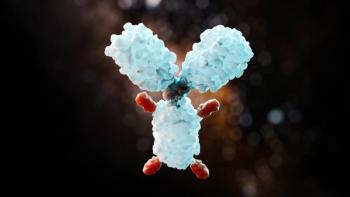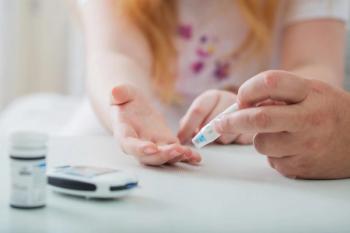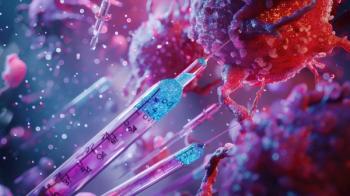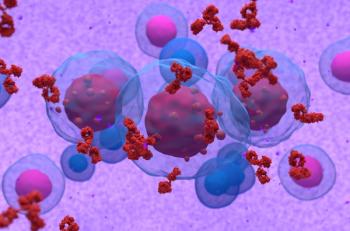
Studies Examine Therapeutic Potential of 'Magic Mushrooms' in Oncology Patients
As barriers to accessing medical cannabis continue to weaken across the country, more light is being shed on the potential benefits of other psychedelic substances.
Within the span of a couple days, The New York Times reported on the approval of a phase 3 clinical trial of
3,4-methylenedioxy-methamphetamine (
MDMA),1 as discussed in a Pharmacy Times blog by Eric Roath last month,2 and potential therapeutic uses of psilocybin, an active hallucinatory ingredient in “magic mushrooms.”3 As barriers to accessing medical cannabis continue to weaken across the country, more light is being shed on the potential benefits of other psychedelic substances.
The Journal of Psychopharmacology published 2 different randomized, controlled trials with a crossover design on the same day in early December 2016 that observed the benefits of psilocybin on depression and anxiety in patients with late-stage and high-risk cancers.4,5 Although small populations were clear limitations, these are the most legitimate studies to date on the substance and build off a pilot study at UCLA of just 12 patients.6 The following paragraphs highlight the design and results of both these studies, the first being conducted by Dr. Stephen Ross at New York University and the second by Dr. Roland Griffiths at Johns Hopkins University.
After data assessment at baseline, the researchers let 2-4 weeks pass before the dose one. Treatment consisted of either a single dose of 0.3 mg/kg of psilocybin or 250 mg of niacin. Seven weeks after dose one, crossover occurred and the groups were treated with the alternative substance. Further data assessments occurred at one day before doses 1 and 2, 7 hours post dose 1 and 2, then 1 day, 6 weeks, and 26 weeks after dose two. From 31 randomized patients, only 26 completed dose 2 while 23 completed the 6-month follow up. All patients carried an anxiety-related diagnosis while nearly two thirds had stage III-IV cancer and another two-thirds had been previously treated with anti-depressant or anxiolytic medications. Per the inclusion criteria, no patients simultaneously used psychtropics at the time of enrollment.4
There were no serious psychological or medical adverse events attributed to either substance and no pharmacological interventions were necessary. Additionally, there were no reports of addiction to psilocybin between the cohorts. There were elevations in blood pressure and heart rate, headaches, nausea, transient anxiety and transient near-psychotic symptoms reported. Significant reductions in anxiety and depression and significant anxiolytic and anti-depressant response rates (according to validated measurement scales) were observed in the psilocybin cohort immediately and endured to the final assessment at 26 weeks. Psilocybin further decreased cancer-related demoralization and hopelessness while improving spiritual well-being, general life satisfaction, and quality of life in this study.4
After 56 patients were randomized for the second trial, 51 completed the first session of data collection, and 46 completed the 6-month follow up. These patients had a potential life-threatening cancer diagnosis (65% with recurrent or metastatic disease) and a DSM-IV code for anxiety or mood symptoms. This trial differed in that low dose, placebo-like (1 or 3 mg/70 kg) psilocybin and high dose (22 or 30 mg/70 kg) psilocybin were used as the 2 randomized interventions. Cohort expectancy was hypothesized to be curbed with this approach versus a classic placebo versus intervention design. Within a month of baseline data assessment, session 1 was conducted with session 2 ensuing 5 weeks later. Other assessments occurred during and after each session, 5 weeks after each session, and approximately 6 months after session 2.5
No adverse events were deemed serious and all adverse events were resolved fully by the end of the sessions. Elevated systolic was more prevalent than elevated diastolic blood pressure and occurred more frequently in the high dose group. Nausea, physical discomfort, transient psychological distress, anxiety, and headache also occurred during sessions while there were a few delayed headaches that set in after the sessions. High-dose psilocybin significantly affected the two primary outcomes of depression and anxiety across all time points. Combining both dosing groups, overall clinical response was 78% and 83% and overall rate of symptom remission at six months was 65% and 57% for depression and anxiety respectively.5
This is not to say psilocybin has only been used in experimentation recently; among other studies conducted in the 60s and 70s, one known as the “Good Friday Experiment” was conducted in 19627 with a follow up being completed in 19908 that included 16 of the original 20 participants. As the moniker implies, the original study focused on religion and spirituality and was actually conducted on Good Friday in a group of graduate degree divinity students. The original study and follow up both found significant differences between psilocybin and control groups in 10 categories, including unity, sacredness, and persisting positive changes in attitude and behavior among others.
Those kinds of measurements probably sound questionable compared to the hypercritical analysis and objectivity of research today. However, it does align with how psilocybin is theorized to work. Alterations of consciousness are reported through activation of serotonin receptors, which may “interrupt the circuitry of self-absorbed thinking that is so pronounced in depressed people” and could open the door to previously indecipherable connections and experiencing mysticism and unity.3
Although the associations with counter-culture are only too evident and the illicit classification remains, the most recent trials using psilocybin offer a potential therapeutic use for vulnerable patients that may stand to benefit from this one-time psychedelic treatment.
References
1. Philipps, D. FDA Agrees to New Trials for Ecstasy as Relief for PTSD Patients. New York Times.
2. Roath, E. Is Ecstasy Becoming a Legitimate Medical Treatment? Pharmacy Times Contributor Blog.
3. Hoffman, J. A Dose of a Hallucinogen From a ‘Magic Mushroom,’ and Then Lasting Peace. New York Times.
4. Ross S, Bossis A, Guss J, et al. Rapid and sustained symptom reduction following psilocybin treatment for anxiety and depression in patients with life-threatening cancer: a randomized controlled trial. J Psychopharmacol. 2016;30(12):1165-1180.
5. Griffiths RR, Johnson MW, Carducci MA, et al. Psilocybin produces substantial and sustained decreases in depression and anxiety in patients with life-threatening cancer: A randomized double-blind trial. J Psychopharmacol. 2016;30(12):1181-1197.
6. Grob CS, Danforth AL, Chopra GS, et al. Pilot study of psilocybin treatment for anxiety in patients with advanced-stage cancer. Arch Gen Psychiatry. 2011;68(1):71-8.
7. Pahnke, W. Drugs and mysticism: An analysis of the relationship between psychedelic drugs and the mystical consciousness. Ph.D. dissertation. Harvard University. 1963.
8. Doblin R. "Pahnke's "Good Friday Experiment": a long-term follow-up and methodological critique". J Transpersonal Psych. 1991;23 (1): 1—25.
Newsletter
Stay informed on drug updates, treatment guidelines, and pharmacy practice trends—subscribe to Pharmacy Times for weekly clinical insights.
















































































































































































































